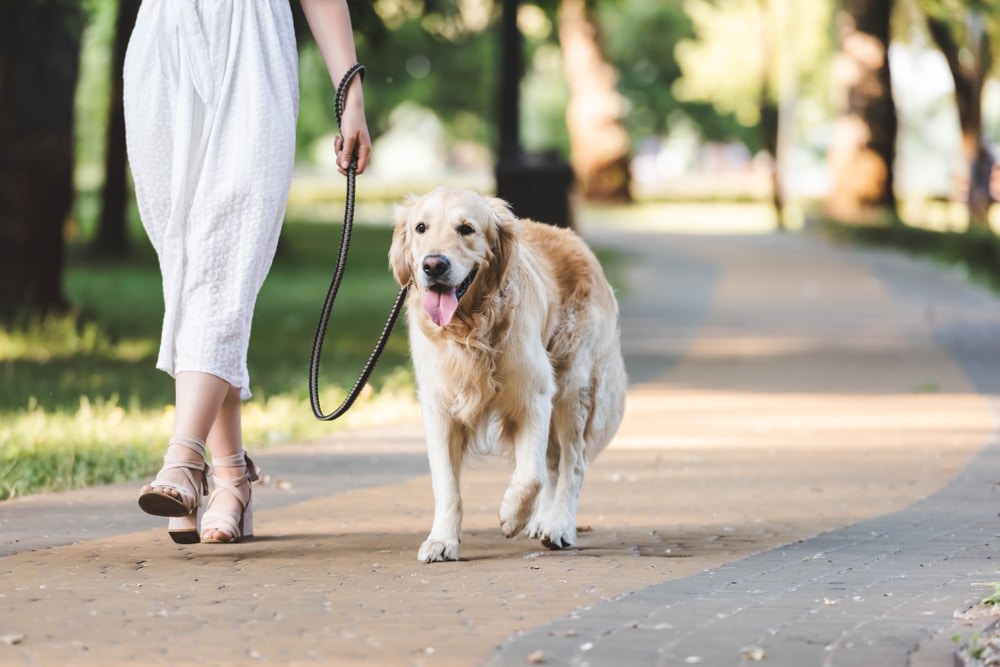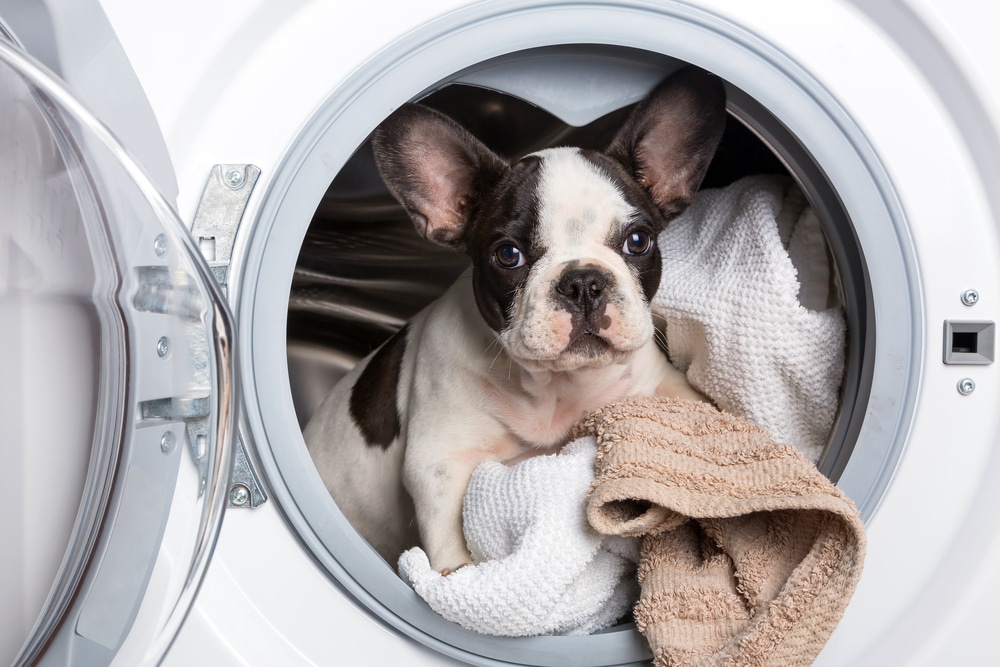Let’s just go ahead and say it: Dogs are amazing. They’re possibly the best thing to ever happen to the human race, and we’re lucky to have them. So it’s no wonder that so many of us want to be able to sleep next to our four-legged friends. But before you invite your doggo to sleep in your bed, some rules need to be followed for it to be a safe and happy experience for all involved. From choosing the right bedding pillows for humans and pups to setting up boundaries and rules before bedtime, here are fifteen essential tips for safe and comfortable co-sleeping with your dog.
- 1) Establish a Bedtime Routine
- 2) Keep Your Dog Clean
- 3) Know Your Dog’s Sleeping Patterns
- 4) Choose the Right Bedding
- 5) Exercise with Your Dog Regularly
- 6) Designate an Area of the Bed for Both You and Your Dog
- 8) Protect Your Mattress
- 9) Limit Snuggling and Play Time
- 10) Use Positive Reinforcement to Get Used to Co-Sleeping
- 11) Take Temperature Into Consideration
- 12) Stay Consistent with the Rules
- 13) Wash Your Sheets Weekly
- 14) Pay Attention to Your Dog’s Needs
- 15) Ensure Your Sleep Partner Is Okay with It
- The Final Word on Co-Sleeping with Pets
1) Establish a Bedtime Routine
Before allowing your pup to join you in bed, it is important to establish a consistent bedtime routine, so they know when to sleep. And making their routine part of yours is essential for co-sleeping peacefully. This means that your dog will need to learn to be relaxed and calm when you are both in the bedroom, which can only happen if they’ve been properly exercised and have had a chance to use the bathroom before bedtime.
2) Keep Your Dog Clean
If you’re sharing a bed, it’s important to keep your pup clean and well-groomed. Not only is this better for their skin and fur, but it will also help to keep any fleas or ticks away from your bedding. In addition, regular brushing and bathing will go a long way in ensuring that the experience of co-sleeping with your fur kid is pleasant for everyone involved. But don’t over-bathe your dog, as it can affect the natural oils in their fur and cause health issues.
3) Know Your Dog’s Sleeping Patterns
Monitor your dog’s sleeping habits so that you know what to expect and if that will work for you. For example, some dogs are early risers and will be up before you each morning, while others may sleep in until noon. Knowing your pup’s natural sleeping patterns will help ensure that co-sleeping works for everyone involved.
4) Choose the Right Bedding
Invest in quality bedding designed for dogs and humans to share comfortably, such as pillows crafted with their comfort and safety in mind. Not only will this ensure they’re comfortable, but it’ll also help protect both of you from any allergies or skin irritation caused by cheaper materials.
5) Exercise with Your Dog Regularly
Exercise with your dog regularly to ensure they get sufficient physical activity before entering the bedroom, as this helps them fall asleep quickly and stay asleep for longer periods. If you can, try to make sure your dog has enough activity during the day — such as going for a walk or playing fetch — so that they can settle down and relax when it’s time for both of you to sleep.

Source: LightField Studios/Shutterstock.com
6) Designate an Area of the Bed for Both You and Your Dog
Figure out an area of the mattress or blankets that both you and your pup can comfortably share without pushing each other off or rolling onto each other during the night, which could cause disruptions in sleep quality. You can also consider investing in a larger bed with plenty of space for both of you.
7) Invest in a Quality Mattress
A good quality mattress that’s ideal for co-sleeping with pets will limit the amount of movement you feel from your doggo during the night. They should also be comfortable and durable. For example, Tempur-Pedic mattresses provide pressure-relieving support that both you and your pup can enjoy.
8) Protect Your Mattress
Using mattress covers or high-quality mattress pads is essential for protecting your mattress from any accidents that may occur. This should help ensure that both you and your pup can sleep peacefully without any worry about spills or messes on the bedding.
9) Limit Snuggling and Play Time
It is important to limit intense snuggling time with your pup before bed to avoid overstimulating them, leading to sleepy time, which may lead to difficulty falling asleep or keeping them awake during the night. If you like to sleep close to each other, that’s fine. But don’t get too wild and roll around with them before going to sleep.
10) Use Positive Reinforcement to Get Used to Co-Sleeping
Positive reinforcement with dogs has been scientifically proven to be one of the most successful ways to train them, so use this technique when trying to get your dog used to sleeping in bed with you. Rewarding good behavior with verbal praise or training treats to help keep desirable co-sleeping behaviors in check while discouraging any negative ones, such as repeatedly jumping up and down off the bed or scratching the mattress.
11) Take Temperature Into Consideration
Adding another warm body into your bed can drastically raise your sleep temperature, especially if your dog is the type to crawl under the blankets with you. If this is the case, you may need to aim for the lower end of the recommended sleep temperature range, which falls between 60 and 67 degrees Fahrenheit. You can also consider using different linens or pillows — or even an entirely new mattress — which promote cooling and better airflow.
12) Stay Consistent with the Rules
It is important to stay consistent with your co-sleeping rules, such as not letting them jump on or off the bed unless it’s okayed by you, to establish a comfortable sleep routine for you and your pup. Establishing rules will also prevent any confusion and help your pet to understand what is expected of them when it comes to co-sleeping.
13) Wash Your Sheets Weekly
If your dog sleeps in your bed, you should wash your sheets at least once a week to help keep the bedding fresh. Keeping things clean will ensure a healthy sleep environment for you both and help to reduce any dust or dirt that may be tracked in from the outside.

Source: Patryk Kosmider/Shutterstock.com
14) Pay Attention to Your Dog’s Needs
Most importantly, you should always pay attention to your dog’s needs when it comes to co-sleeping. If they seem restless or uncomfortable, take them out of the bed until they settle down or provide them with a comfortable sleeping space of their own. If they are having trouble with getting in and out of the bed, you should know this so you can provide the proper assistance, which may include anything from lifting them in and out to providing them with their own doggy stairs.
15) Ensure Your Sleep Partner Is Okay with It
Last, if you have a non-four-legged sleep partner — you know, the human sort — it is imperative that you have a conversation with them beforehand to ensure that they’re comfortable with the idea of co-sleeping with a pup. This should help ensure everyone is on the same page and can enjoy a relaxing slumber free from any worries or anxieties. If they’re not keen or sold on the idea, having a dog sleep in the bed will likely interrupt their sleep, which isn’t fair. Work together to find a suitable solution for your entire family, human and furry.
The Final Word on Co-Sleeping with Pets
By following these tips, you and your pup can achieve a peaceful and comfortable co-sleeping experience that benefits both of you. Remember, every dog is different, so it may take some trial and error to find the best arrangement that meets everyone’s needs. However, you can enjoy a cozy night’s sleep together with patience and dedication. Happy snoozing!

Isreal olabanji a dental assistant and public health professionals and has years of experience in assisting the dentist with all sorts of dental issues.
We regularly post timely and trustworthy medical information and news on Fitness, Dental care, Recipes, Child health, obstetrics, and more.
The content is intended to augment, not replace, information provided by your clinician. It is not intended nor implied to be a substitute for professional medical advice. Reading this information does not create or replace a doctor-patient relationship or consultation. If required, please contact your doctor or other health care provider to assist you to interpret any of this information, or in applying the information to your individual needs.


